De Blas House

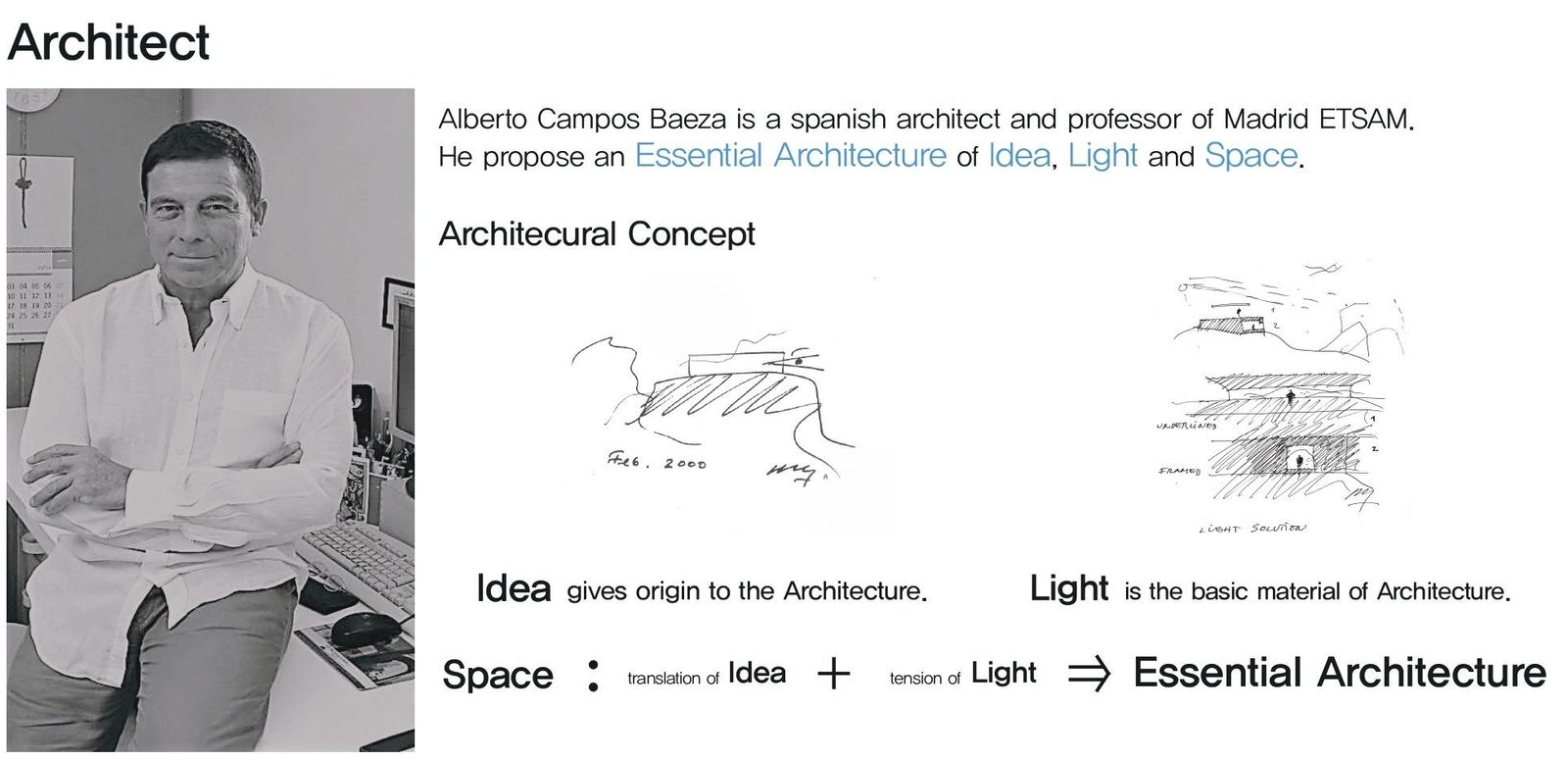
Campo Baeza essentialist preferred term for their works, no elements of adjectives and figurative concessions, but rich in content, proposed findings and bright space.
He understands architecture as the conversion of human and space relating in light and gravity. Gravity makes Space and Light makes Time. Like the relationship between water and a bowl,
gravity is a structure and light is a living substance contained there.
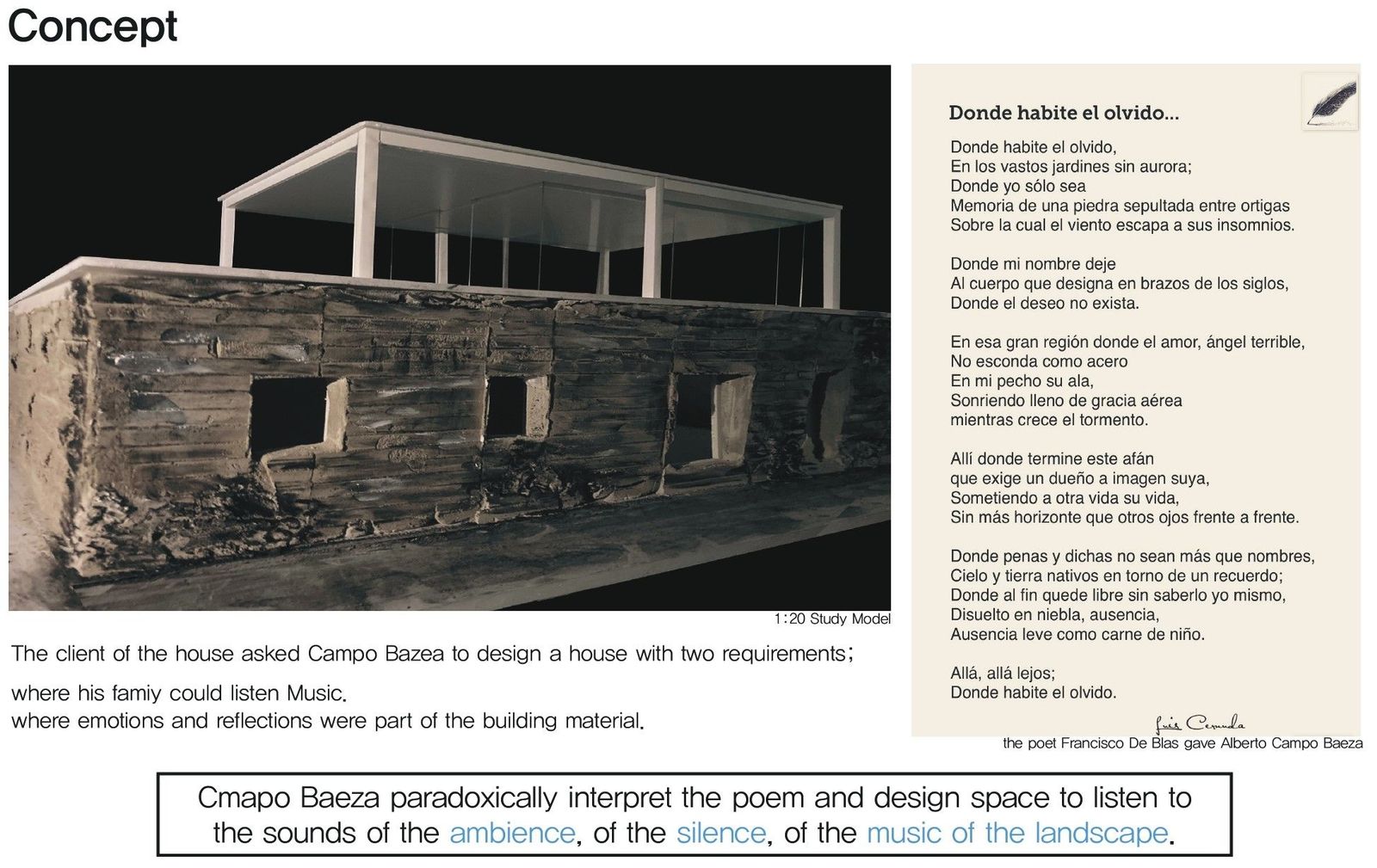
The client of the house was Francisco de Blas who is the profeesor of literature. He gave Alberto Campo Baeza a book of poetry of Luis Cernuda at the first meet and asked him to design a house for his family where they could listen to music. Undoubtedly, He wanted something more than a house. In its new home the emotions and thoughts should be considered as part of the construction material.
Alberto Cmapo Baeza paradoxically interpret the poem and design space to listen to the sounds of the ambience, of the silence, of the music of the landscape.
The popular poem Cernuda “Donde habite el olvido”describes a world where one leaves aside all their problems and to achieve the desired freedom.


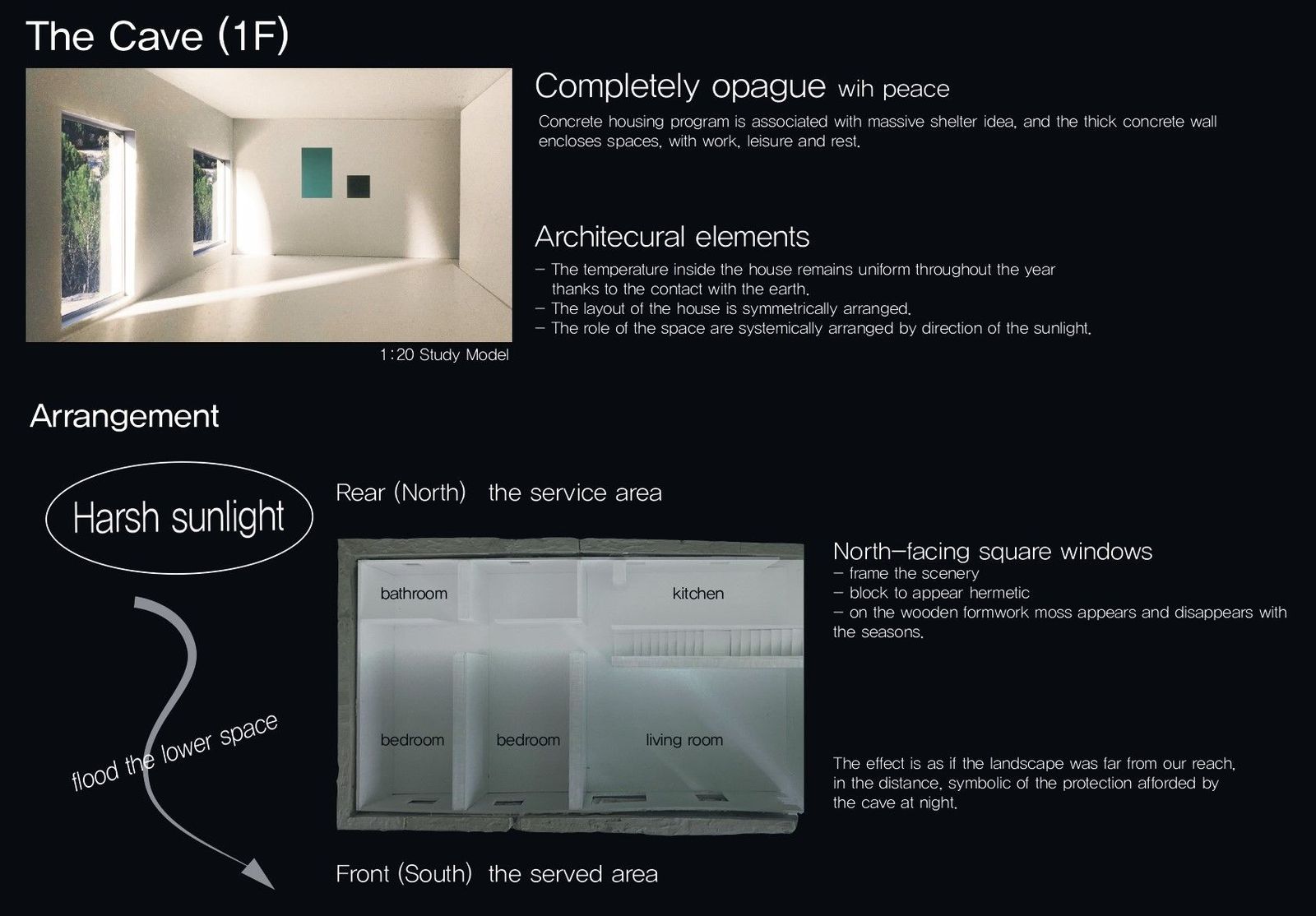
Front (South)
the served areas, bedrooms
and living room
The landscape to the north allows it to coexist without the inhabitants bearing the harsh Madrid sun.
Natural light filtered through the kitchen floods the lower space through the stairwell, with a mirror at the end of the hallway to enhance the incoming sunlight.
Rear (North)
the service areas, bathrooms
and kitchen
North-facing square windows frame the scenery and allow the concrete block to appear hermetic, but alive.
On the imprint left by the wooden formwork on the concrete, moss appears and disappears with the natural rhythm of the seasons.

Final Panel
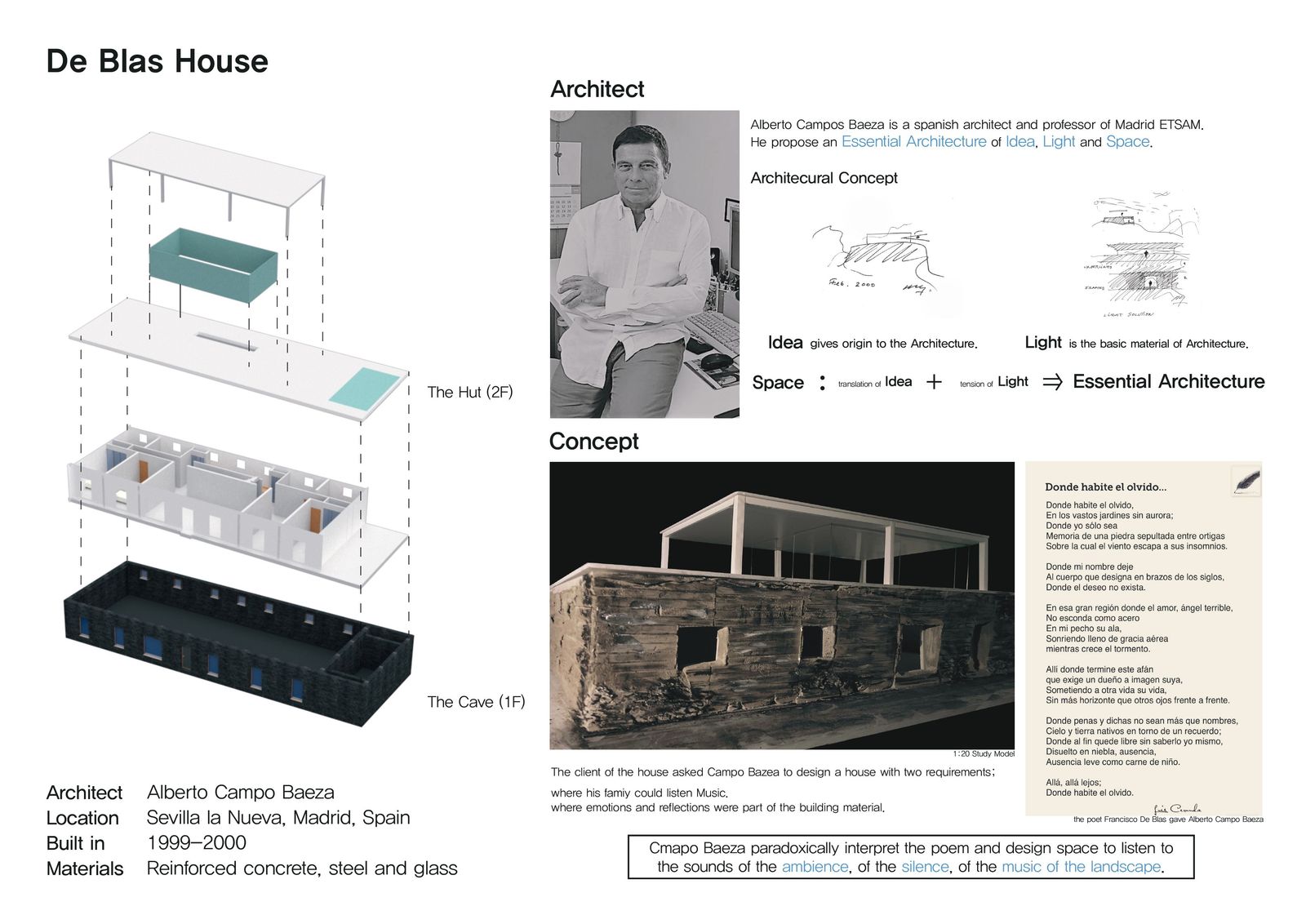
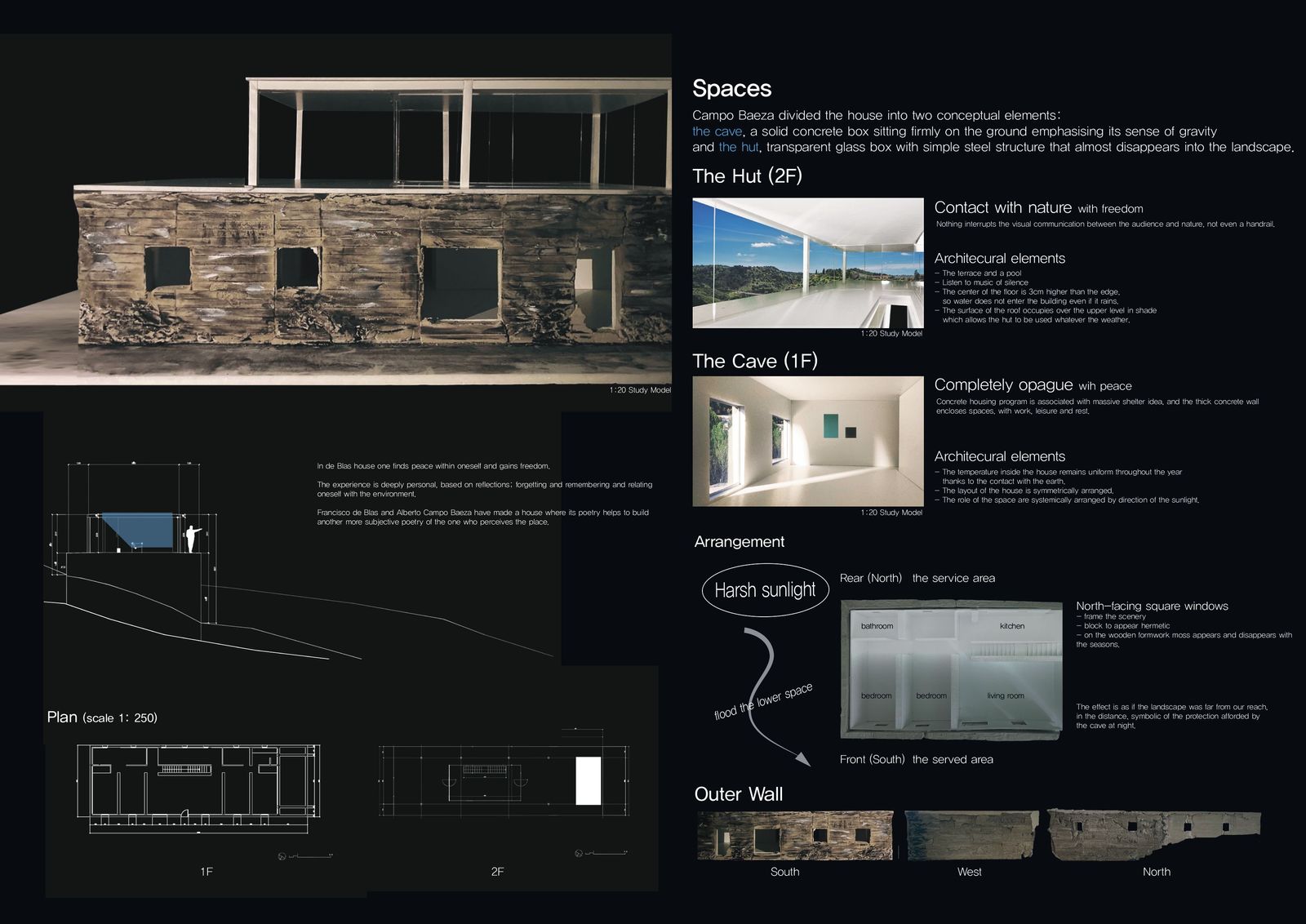
Plan Drawing
모델 사진
Model Making
Modeling Diagram
건물 실제 사진
Copyright © uosarch.ac.kr., Some rights reserved.